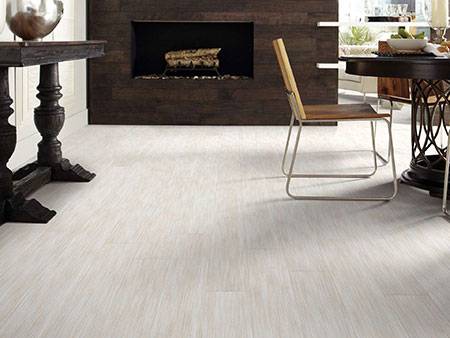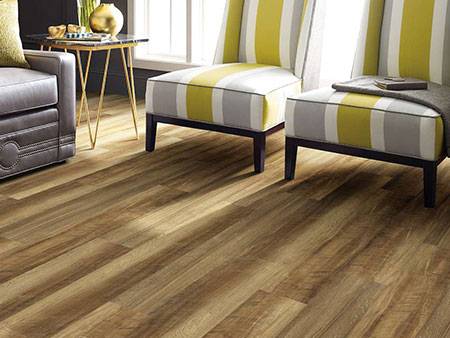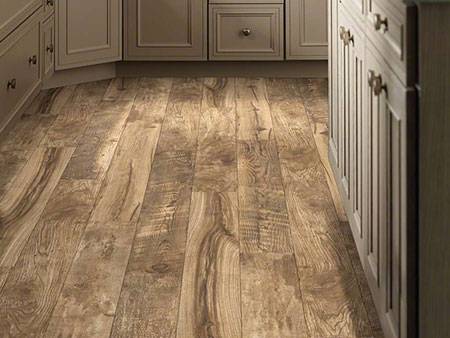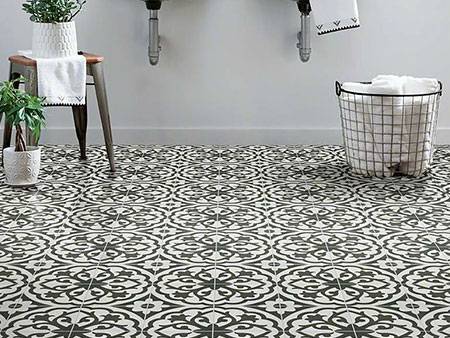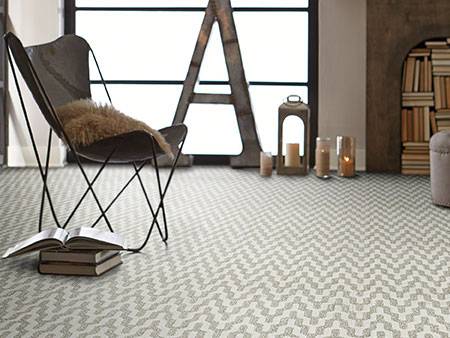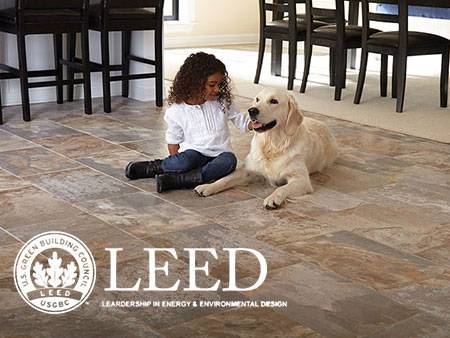Laminate flooring is strong, durable and very easy to install. It’s also much easier to clean than carpet. And if you’re looking for a cheap alternative to real wood, it’s ideal.
In recent years, manufacturers have developed a range of new products that offer enhanced durability. These new production methods have also increased the choice of styles on offer.
Choosing the right laminate for the space isn’t always easy – and that’s if laminate is the best option. To help you make the right flooring choices in your home, we’ve put together a comprehensive guide to laminate flooring.
The Benefits of Laminate Flooring
Laminate flooring is perfect for a busy family home. Not only does it provide resistance to scratching and other forms of damage, it’s also largely water-resistant. Yes, water can creep into the seams between laminate sections, but only if it’s given the time to do so.
Thanks to a range of new printing and manufacturing techniques, the choice of laminate styles and colors is bigger than ever. You can now create classic wood or tile effects at a fraction of the usual price. All you need to do is choose the right laminate for the space.
Installing laminate flooring is a relatively straightforward process – although things can get tricky when it’s time to cut it. Nevertheless, laminate can be laid very quickly, which minimizes disruption in the home.
Once your laminate is on the floor, you can look forward to many years of faithful service. As long as your flooring is laid to a high standard, it should be highly durable. And in most cases, cleaning up spills and mess should involve nothing more than a damp cloth.
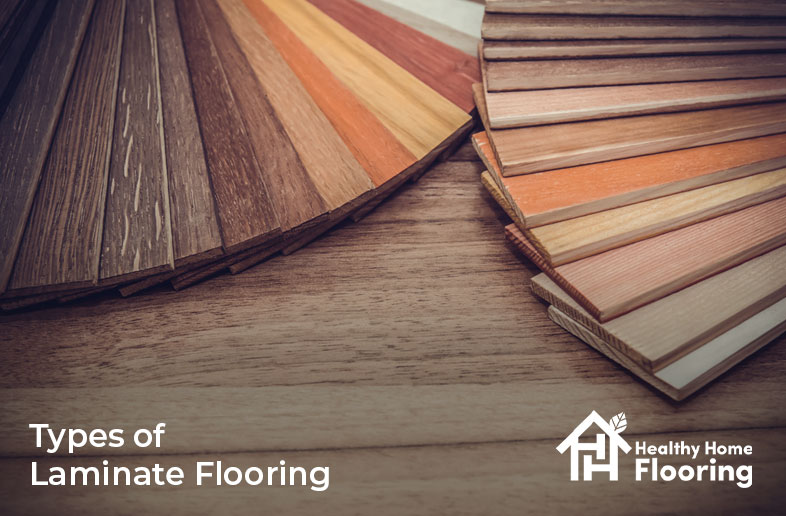
How to Choose the Right Laminate for a Room
Whether you’re looking for a wood-effect finish or something more clinical for a bathroom, you can’t fail to find the perfect laminate. In fact, the only difficulty you’ll encounter will be choosing for the massive selection of laminate floors currently on the market.
Choosing Laminate for a Bathroom
Because laminate flooring leaves tiny gaps between planks, it’s usually not suited to bathrooms. However, there are now some options that are specifically designed for wet rooms. Just make sure you choose something that’s slip-resistant.
Choosing Laminate for a Kitchen
Laminate is usually suitable for kitchens, as the surface is completely impervious to water. As long as you wipe up spills immediately, you shouldn’t run into too many problems. If you’re looking for an affordable wood-effect floor for a traditionally decorated kitchen, laminate is a good choice.
Choosing Laminate for Living Rooms and Bedrooms
Laminate is perfect for living rooms and bedrooms. Whether you’re looking for the rich warmth of walnut or the freshness of beech, there’s a laminate floor that’s perfect for your room. You may also be able to find a floorboard-effect laminate that gives the space its own rustic charm.
How is Laminate Flooring Made?
Laminate flooring (sometimes referred to as floating wood tile) consists of several layers that are fused together under heat and pressure. The under-layers are made with various fiber board materials and melamine resin. A photographic layer is then added to deliver the desired aesthetic – which in most cases is either wood or stone. A clear, protective layer protects the floor from moisture and general wear and tear.
The Installation Process
One of the reasons laminate flooring is so popular these days is the simple installation process involved. If you’re a capable DIY enthusiast, you might be able to take on the job yourself. However, to ensure your floor stands the test of time, it’s usually a good idea to hire flooring specialists for the job.
Laminate flooring is usually delivered in the form of planks. These pre-cut lengths “lock” together through a simple tongue-and-groove system. Some manufacturers offer glue backing, but a sheet of underlayment is most commonly used.
The bulk of the installation process is exceptionally simple. All you need to do is lay the laminate planks on the floor, and lock each one into place with the next. A small gap of just a few millimetres should be left between the laminate and the baseboards. This is necessary to allow for movement caused by changes in temperature or humidity.
Beading trims are nailed or glued down to fill the gaps by baseboards and complete the aesthetic. Professional flooring experts will usually a jamb saw to create a clean finish at door entrances. But it’s also possible to cut laminate planks with a regular saw and transition them with the next room using a laminate divider.

What Are the Different Types of Laminate Flooring?
There are more styles of laminate on the market today than ever before. In fact, it’s now possible to install laminate flooring in every type of room. Take a look at the selection available from Healthy Home Flooring, and you’ll find the following styles:
Oak
Oak-effect laminate is probably the most popular on the market right now. It delivers the timeless aesthetic people know and love – but for a fraction of the price. In fact, you’d probably find it almost impossible to differentiate laminate from real oak at first glance. Thanks to constant research and development, oak-effect laminate is ultra realistic. Not only that, it doesn’t require the level of maintenance needed for real wood.
Walnut
Walnut delivers a much darker, richer look that is perfect for adding something different to a neutrally decorated space. You’ll still get those beautiful grains and knots, but without the price-tag.
Hickory
Hickory-effect laminate is earthy and rich, which makes it perfect for hallways and living rooms. Available in a wide range of colors (including everything from beige to deep red), hickory is a great way of adding texture to a minimalist space.
Slate
Real slate is very expensive, and it requires a great deal of maintenance and re-sealing over its lifetime. You can achieve the same look at a fraction of the cost by laying slate-effect laminate. There are now some great options designed specifically for bathrooms and kitchens.
Stone
Real stone floors cost a small fortune. Not only that, they require sealing and lots of preventative maintenance. And when they get damaged, they’re notoriously expensive to repair. But with stone-effect laminate, you can get all the aesthetic benefits without any of the expense or hassle.
Chestnut
Chestnut sits right between oak and walnut in terms of warmth. Available in a few shades of rich brown, it’s ideal for almost any type of living space. However, it really comes into its own in traditional spaces – thanks to its vintage look and feel.
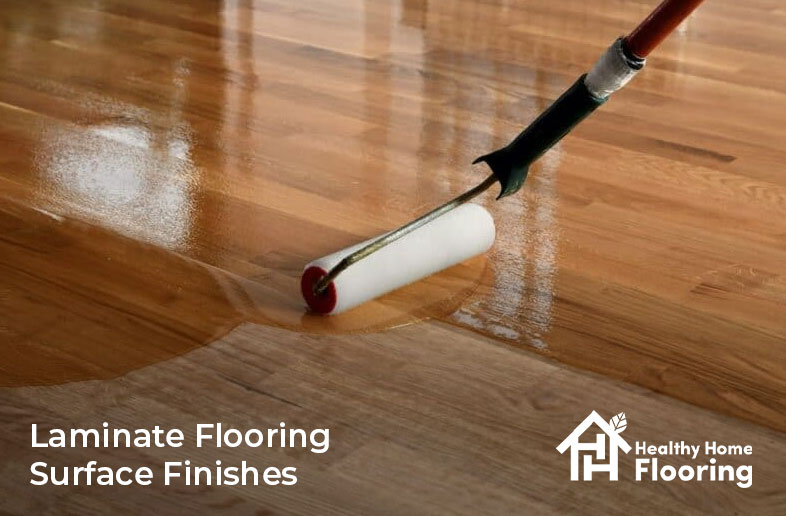
What Are Different Laminate Flooring Surface Finishes?
Depending on your own personal preferences, how you use the space and the overall aesthetic you’re trying to achieve, you should give some thought to the flooring surface you choose.
Embossed Laminate Flooring
A simple finish is smooth and clear. However, it can be slippery when wet. And it can create a shine that detracts from the natural aesthetic laminate is well known for. Embossed laminate overcomes these problems by adding texture. The upper layer is pressed into the laminate to make it look and feel more like real wood, tile or stone. However, the pressing process doesn’t align with the grain – detracting from the authenticity of the final floor.
Registered Embossed Laminate Flooring
Unlike standard embossed finishes, registered embossed laminate features an upper protective layer that is pressed to sync with the pattern of the fake wood. Grains and knots can be felt, as well as seen. The latest manufacturing techniques ensure that textures are aligned to patterns with exceptional levels of accuracy. The result is a product that delivers everything real wood does.
Hand-scraped Laminate Flooring
If you really want to double down on that authentic, rustic look delivered by real wood, choose hand-scraped laminate flooring. It’s made in the same way as embossed laminate, but it is given a distressed aesthetic through a “scraping” process. While more expensive than other types of laminate, it’s still far cheaper than installing a real wood floor.
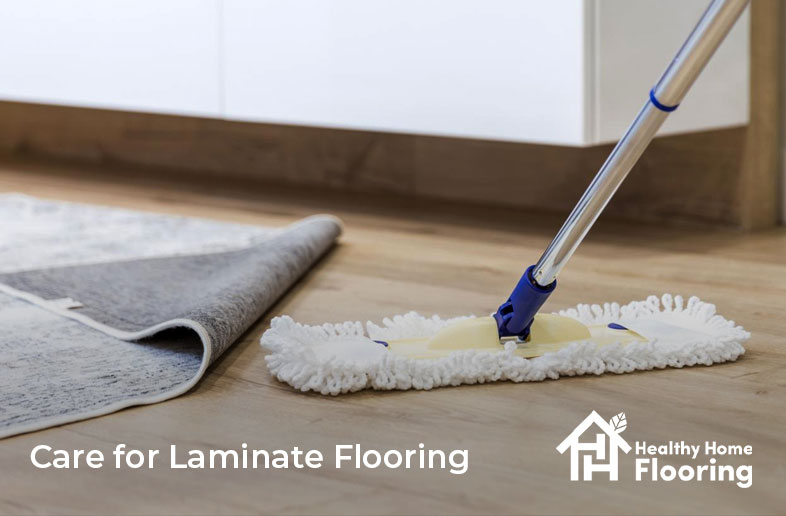
How to Care for Laminate Flooring
Laminate flooring is strong, water-resistant and usually scratch-resistant – under normal circumstances. But this doesn’t mean it’s not susceptible to damage. For example, a small piece of grit or a tiny stone can cause a scratch or gouge when it’s trodden under foot. This is why you should sweep or vacuum your laminate every day. Place protective pads on furniture legs in order to prevent scratches when moving them around.
The actual surface of most laminate floors is completely impervious to water. But water can seep into the seams between individual planks. This is why it’s vital that you clean up spillages as soon as they occur. In most cases, a damp microfiber cloth can be used to clean up spillages. You can also use an efficient steam mop for most floors, as they’re designed to leave floors dry to the touch almost immediately.
A badly-fitted laminate floor can suffer from a problem known as gapping. This involves individual planks moving out of place and leaving large gaps. The problem can also be caused by an inferior product. Purchase a high-quality glueless laminate with a tongue-and-groove joining mechanism to avoid this problem. Also, ensure your floor is laid by professional floor installers.
Don’t use cleaning agents on your laminate, as some can wear away the protective layer on the top. Also, never use sealants, waxes or oils – you don’t need them. Laminate flooring is designed to shine as if it’s already waxed.
Why Are More and More People Turning to Laminate?
As well as the obvious practical and cost-related benefits, laminate flooring gives people different decorative options. It’s a great way to replace carpet cheaply, and a quality product looks and feels just like real wood or stone. Laminate is also a good option if you want to get rid of those annoying baseboards, or if you want to install your new floor yourself.
But laminate isn’t indestructible. And when it becomes damage, it can’t be repaired in the way stone, tile and wood can. For example, if you notice a huge gouge in the center of your floor, you can’t simply sand it down and re-seal it. Because of the way laminate planks are joined together, you need to lift up the entire floor.
Despite a few issues to be wary of, laminate flooring is easy to install, affordable and highly versatile. And until you reach walls and entranceways, specialist tools aren’t required to lay it. But if you’re looking for perfection, you should leave the job of installing your new laminate floor to experienced professionals.
The experts at Healthy Home Flooring will provide you with a free, no-obligation consultation. You’ll be given all the options, and a team of installers will perform the work. You get the peace of mind that comes from knowing your floor was fitted to perfection. And in the highly unlikely event that something goes wrong, the experts at Healthy Home Flooring have you covered.










